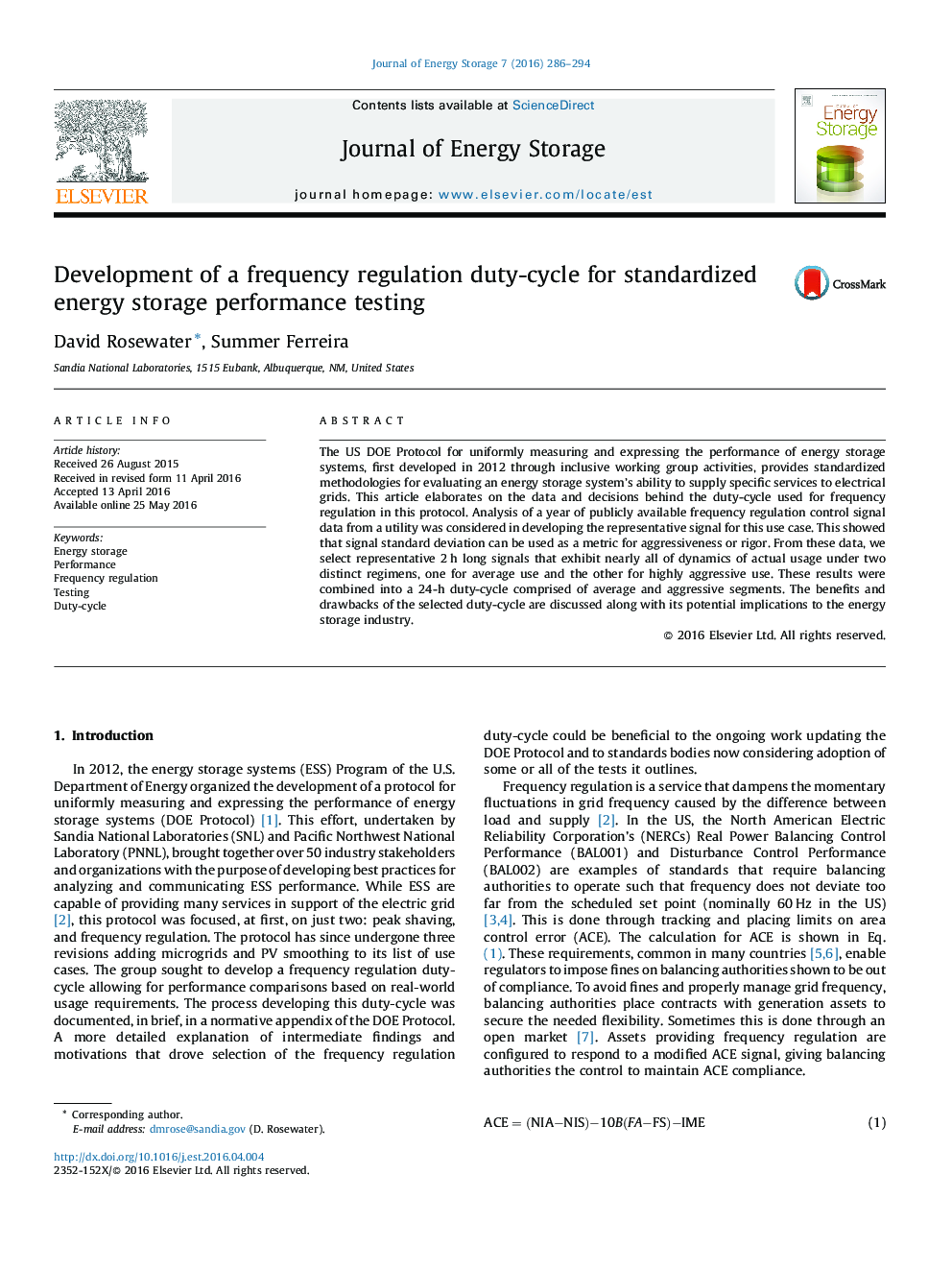| Article ID | Journal | Published Year | Pages | File Type |
|---|---|---|---|---|
| 7540315 | Journal of Energy Storage | 2016 | 9 Pages |
Abstract
The US DOE Protocol for uniformly measuring and expressing the performance of energy storage systems, first developed in 2012 through inclusive working group activities, provides standardized methodologies for evaluating an energy storage system's ability to supply specific services to electrical grids. This article elaborates on the data and decisions behind the duty-cycle used for frequency regulation in this protocol. Analysis of a year of publicly available frequency regulation control signal data from a utility was considered in developing the representative signal for this use case. This showed that signal standard deviation can be used as a metric for aggressiveness or rigor. From these data, we select representative 2Â h long signals that exhibit nearly all of dynamics of actual usage under two distinct regimens, one for average use and the other for highly aggressive use. These results were combined into a 24-h duty-cycle comprised of average and aggressive segments. The benefits and drawbacks of the selected duty-cycle are discussed along with its potential implications to the energy storage industry.
Related Topics
Physical Sciences and Engineering
Energy
Energy (General)
Authors
David Rosewater, Summer Ferreira,
